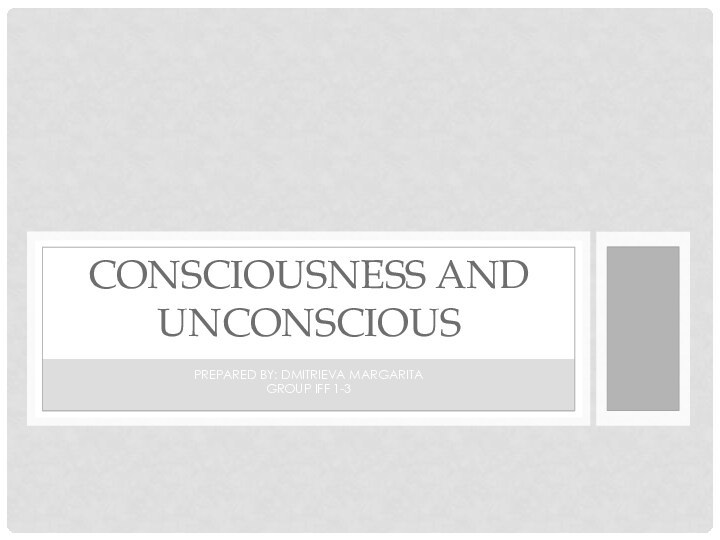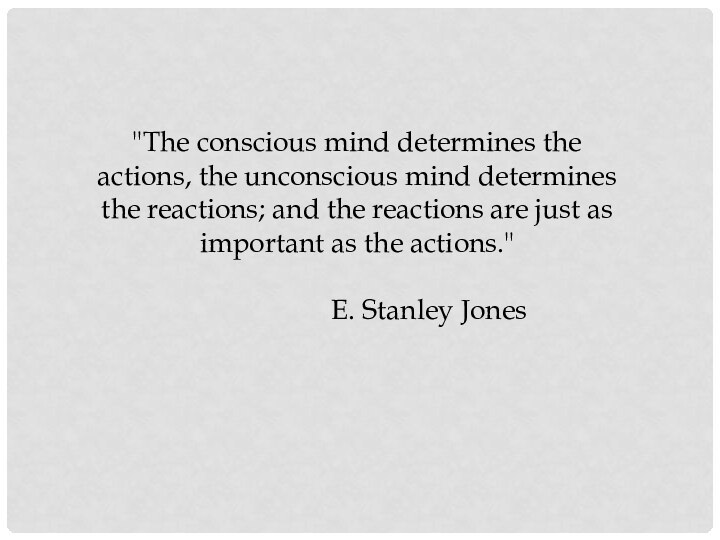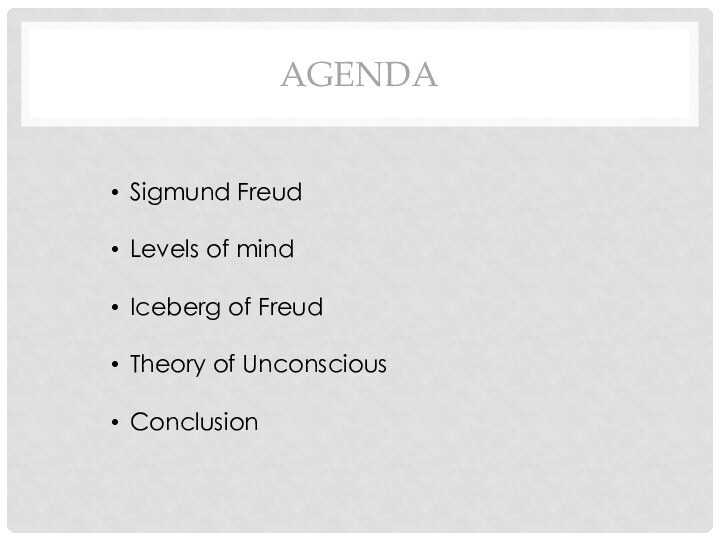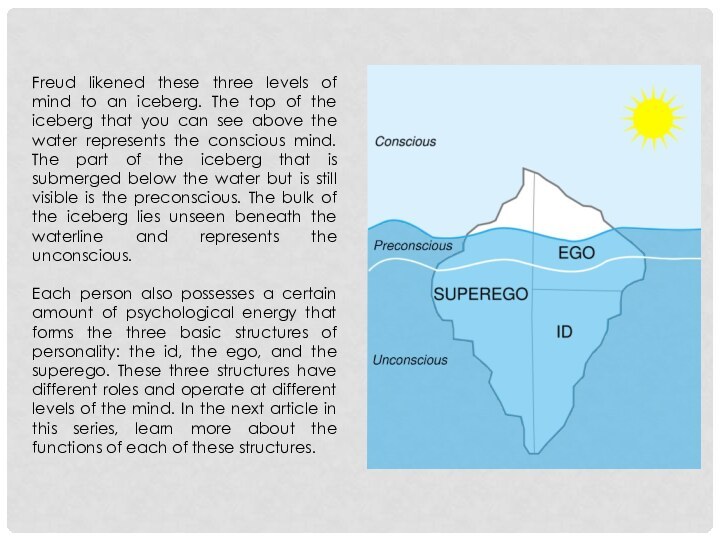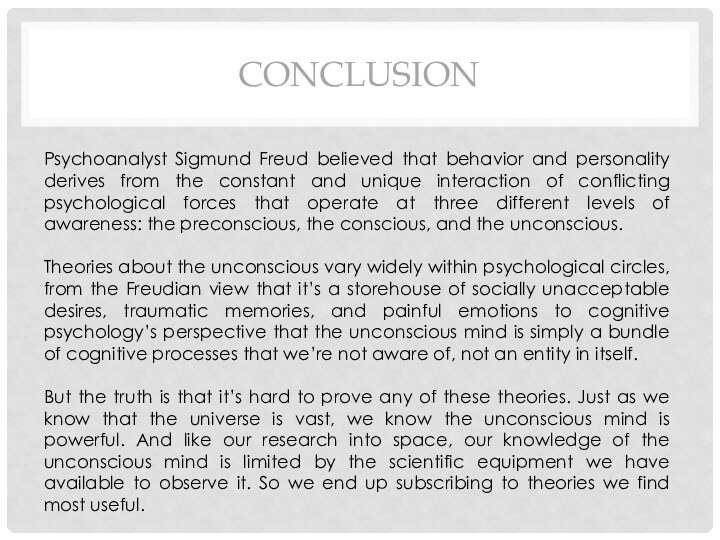Слайд 2
"The conscious mind determines the actions, the unconscious
mind determines the reactions; and the reactions are just
as important as the actions."
E. Stanley Jones
Слайд 3
agenda
Sigmund Freud
Levels of mind
Iceberg of Freud
Theory of Unconscious
Conclusion
Слайд 4
sigmund freud
Sigmund Freud (6 May 1856 – 23 September
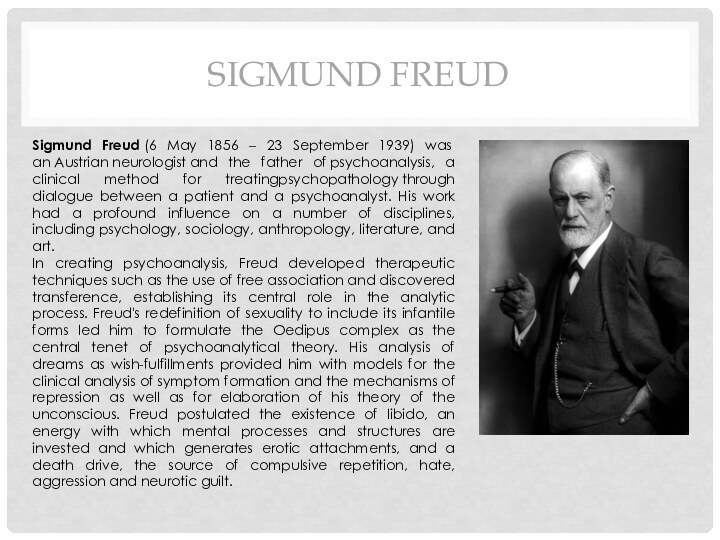
1939) was an Austrian neurologist and the father of psychoanalysis, a clinical method
for treatingpsychopathology through dialogue between a patient and a psychoanalyst. His work had a profound influence on a number of disciplines, including psychology, sociology, anthropology, literature, and art.
In creating psychoanalysis, Freud developed therapeutic techniques such as the use of free association and discovered transference, establishing its central role in the analytic process. Freud's redefinition of sexuality to include its infantile forms led him to formulate the Oedipus complex as the central tenet of psychoanalytical theory. His analysis of dreams as wish-fulfillments provided him with models for the clinical analysis of symptom formation and the mechanisms of repression as well as for elaboration of his theory of the unconscious. Freud postulated the existence of libido, an energy with which mental processes and structures are invested and which generates erotic attachments, and a death drive, the source of compulsive repetition, hate, aggression and neurotic guilt.
Слайд 5
According to Freud, the mind can be divided
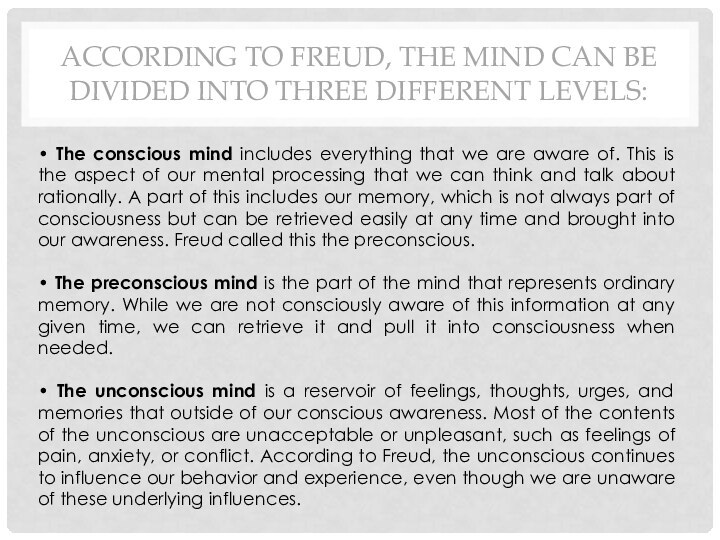
into three different levels:
The conscious mind includes everything
that we are aware of. This is the aspect of our mental processing that we can think and talk about rationally. A part of this includes our memory, which is not always part of consciousness but can be retrieved easily at any time and brought into our awareness. Freud called this the preconscious.
The preconscious mind is the part of the mind that represents ordinary memory. While we are not consciously aware of this information at any given time, we can retrieve it and pull it into consciousness when needed.
The unconscious mind is a reservoir of feelings, thoughts, urges, and memories that outside of our conscious awareness. Most of the contents of the unconscious are unacceptable or unpleasant, such as feelings of pain, anxiety, or conflict. According to Freud, the unconscious continues to influence our behavior and experience, even though we are unaware of these underlying influences.
Слайд 6
Freud likened these three levels of mind to
an iceberg. The top of the iceberg that you
can see above the water represents the conscious mind. The part of the iceberg that is submerged below the water but is still visible is the preconscious. The bulk of the iceberg lies unseen beneath the waterline and represents the unconscious.
Each person also possesses a certain amount of psychological energy that forms the three basic structures of personality: the id, the ego, and the superego. These three structures have different roles and operate at different levels of the mind. In the next article in this series, learn more about the functions of each of these structures.
Слайд 7
theory of Unconscious
The unconscious mind (or the unconscious)

consists of the processes in the mind which occur
automatically and are not available to introspection, and include thought processes, memories, interests, and motivations.
Even though these processes exist well under the surface of conscious awareness they are theorized to exert an impact on behavior.
Empirical evidence suggests that unconscious phenomena include repressed feelings, automatic skills, subliminal perceptions, thoughts, habits, and automatic reactions, and possibly also complexes; hidden phobias and desires.
The concept was popularized by the Austrian neurologist and psychoanalyst Sigmund Freud. In psychoanalytic theory, unconscious processes are understood to be directly represented in dreams, as well as in slips of the tongue and jokes.
Thus the unconscious mind can be seen as the source of dreams and automatic thoughts (those that appear without any apparent cause), the repository of forgotten memories (that may still be accessible to consciousness at some later time), and the locus of implicit knowledge (the things that we have learned so well that we do them without thinking).
